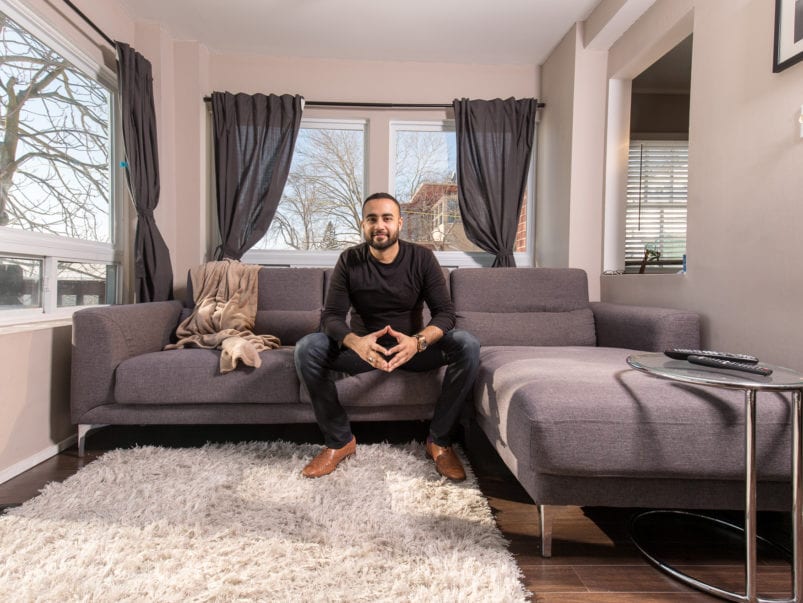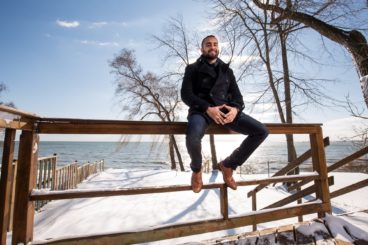How a 32-year-old managed to accumulate 10 homes in Toronto

I’m 32 years old, I currently own 10 homes in Toronto, and I did it without any direct help from my parents.
That’s not to say I had no help whatsoever, and getting to this point was a long and difficult process with many lucky breaks along the way—but I’m living proof that it’s possible for people my age to have success in real estate investment, despite much evidence to the contrary. Not just anyone could do what I did (especially today, with housing prices at stratospheric levels) but here, for the record, is how I did it.
My story starts in Delhi, India, where I grew up dreaming of being an investment banker. At 18 years old, I got my chance: I was accepted to Wilfrid Laurier University, where I could study finance and economics. I was finally on my way.
Before I left for Canada, my father, who ran a business importing food additives, gave me a stern financial warning. “I can carry you through two semesters of university,” he told me. “And then you’re on your own.”
I took out student loans and worked a fundraising job for the Laurier Alumni to make ends meet. I was deeply in debt, and I wasn’t an A-plus student. But I was diligent about networking. After I graduated, I landed an interview with CIBC in Toronto. They didn’t hire me, but one of the interviewers was impressed enough that he referred me to the bank’s New York office. I flew down for an interview and got a job as an analyst in equity capital markets. I was working at an investment bank in Manhattan. I had achieved my dream. Or so I thought.
I was pulling 16-hour days, stuck behind a desk. After a year, I wanted out. Leaving my job at CIBC was one of the toughest decisions I’ve ever made—and it was all the more difficult because my family and friends thought I was crazy.
All my friends were in Toronto, so I moved back. I had about $80,000 saved up from my year in New York—a lot of money, but not a fortune. I got a sales job at Nestle that didn’t require me to sit behind a desk all day, but I still needed a place to park my savings. Real estate seemed like a good bet. At the time, in 2010, the prices for one-bedroom condos in North York were around $400,000. I almost bought one, but then I realized that for just a little bit of extra money I could get a two-bedroom detached home.
Everyone was saying that Toronto’s housing was overvalued, but a $500,000 piece of land in Canada’s biggest city seemed like a bargain to me. I spent days researching neighbourhoods, sometimes driving around late at night and taking note of the types of cars in driveways to get a sense of the income levels of residents. Some of the neighbourhoods I was touring were clearly beginning to attract wealth. I was confident that many of the houses I was looking at were underpriced.
My first purchase was a bungalow near Yonge and Finch, an often overlooked neighbourhood with excellent public transportation. It was $515,000—a complete leap of faith for a 24-year-old. Many young people buy their first homes with gift money from their parents. That wasn’t an option for me, so I came up with another solution: a partnership. I split ownership of the house with my uncle, who put up half the down payment in exchange. After we closed on the property, I moved into the basement and agreed to pay $800 per month toward the mortgage. It was a difficult living situation: the space was only half-finished, it was leaky and it had a cockroach problem. We rented the upstairs for $1,900, and that was enough to cover most of the rest of our monthly expenses.
I was sure that property in the Yonge and Finch area was going to continue to appreciate, so I thought: why stop at just one? In the months that followed, I read countless reports and articles about the real estate market, and I spent hours on Realtor.ca scouting for my next deal. In 2011, I bought a second bungalow in the neighbourhood, purely as an investment. I took a loan to increase the size of my down payment, and I ended up getting the place for $660,000. Again, I found a tenant quickly, and again the rent was nearly enough to cover my monthly costs. The following year I put a deposit on a pre-construction two-bedroom condo near Sheppard West station.
All of my purchases were in the middle six figures, so I didn’t feel as though I was paying outrageous prices. And all of them were in areas well served by subways, which both boosted the rent I could charge and increased each property’s potential for price appreciation.
By the end of 2013, I was 27 years old. The value of my first property—the bungalow I bought with my uncle—had reached about $800,000. We could have sold the house and made a modest profit, but I had a different play in mind: we refinanced the mortgage to free up about $150,000. I used my share to put a down payment on yet another North York bungalow with another partner, a friend from university.
I had to maintain four properties, all while holding down a full-time job. Staying sane and solvent was a struggle. I moved out of the basement of my first bungalow and into a one-bedroom rental condo, which I shared with a housemate. My bedroom was a tiny den. I didn’t have a fancy car, and, unlike most of my friends, I rarely went out for expensive nights on the town.
Around this time, people I knew started reaching out to me for advice. They saw my real estate portfolio beating the market and they wanted the same for themselves. So I got my real estate licence and became a full-time realtor, with a focus on investor clients.
North York was becoming expensive, so I looked for other locales roughly the same distance from downtown. In 2015, with a partner, I bought my first bungalow in South Etobicoke.
In 2016, my uncle and I sold the property we’d bought together six years prior. By this point, values in North York had soared. We got $1.52 million for the home and cleared almost a million dollars in profit. At around the same time I refinanced the mortgage on one of my other North York bungalows and used the proceeds, combined with $600,000 in personal loans from the family of one of my partners, to completely rebuild the house. We sold it for $2.6 million, of which my share was about $480,000. I had made almost $1 million. I was 30 years old.
I reinvested most of my profits back into real estate. That year, I bought four more properties, including a $1.6-million home for myself, in South Etobicoke. Its backyard sits directly on the Lake Ontario shoreline, a rare luxury that I still cherish.
I get emotional when I think about this time in my life. I had spent the past six years making sacrifice after sacrifice to grow my portfolio, and my effort had finally paid off. I started living like a human being again: going out with friends, taking trips to Las Vegas and South Beach. I even bought my dream car, a black Mercedes CLS 550—a used one, but still.

Suddenly, all the people who had told me I was crazy when I quit my banking job were asking me for advice. My parents were proud. I flew them to Canada and gave them a tour of Toronto.
In total, I’d estimate the current value of my entire real estate portfolio of 10 properties at about $10.1 million, although about half of that belongs to my investing partners. Rents have increased so much over the past decade that I’m still breaking even after debt payments.
The market has changed radically since I got a foothold: buying practically anywhere in Toronto as a 20-something would be a huge challenge. If you partner with people, though, and if you look outside the city, to areas like Waterloo and York Region, where public transportation is starting to improve, it’s still possible to find detached homes worth investing in.
Now that I’ve achieved a level of comfort, I try to give back. Every year, I mentor a new group of 20 young business students. I teach them the kinds of entrepreneurial skills that they aren’t learning in school. What I did wasn’t easy, but I honestly believe that it is possible for other young people to do something similar, even today, if they’re willing to sacrifice and take risks.





